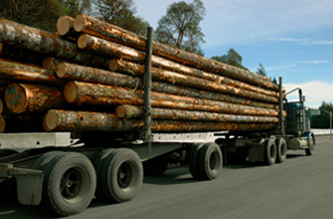Environment
Our Mission Statement
Our mission is to provide beautiful and unique woods from around the world while supporting sustainable forestry, sourcing only legally harvested lumber.
Cormark International is committed to using our world’s wood resources carefully, balancing the sustainable use of wood today while supporting conservation resources for the future of the communities dependent on the forest. This conscious balance helps us to contribute to the improving of long-term socio-economic benefits for the people and communities where we do business.
Through many years of diligent work, Cormark International has built long-standing relationships with sawmilling groups and suppliers who model strong environmental, social, and humanitarian obligation to the areas and communities they work in.

Sustainable Harvesting
In developing countries, community forestry empowers the local population to manage forests sustainably, balancing ecological health with economic needs. There is a variety of ways to achieve sustainable forestry.
Selective Harvesting
This method involves logging within timber concessions of specific hardwoods by selectively choosing and marking the logs for cutting. These logs are then cut and removed, with emphasis on minimal impact to the surrounding area. Areas that are subject to selective harvesting are generally only re-visited every few years (as determined by the amount of mature trees left behind after each harvest); this allows the harvested area to sustain itself.
Plantation Harvesting
This method is generally used for high demand species and is a very successful program that over the years has added greatly to many countries standing hardwood inventory. In this method land is generally reclaimed from farming enterprises or alternatively from land that is deemed useless for any other industry. Tree sapling farms are established to generate seeds into saplings (infant trees) and these are then taken into the allocated area and planted in neat straight rows. These infant trees are monitored on a regular basis and as they begin to mature are regularly pruned and tested for diseases or genetic problems. Once the trees reach maturity they are harvested through clear-cutting techniques that take into account many factors such as top soil run off degradation of the plot of land etc, minimal damage to these important aspects is crucial and strictly followed. The land is then once again prepped for the new batch of saplings to be planted.
Misconceptions of the Lumber Industry
The largest challenge facing the lumber industry today is not the challenges in harvesting using correct and non-invasive techniques but rather the misconception of people regarding the industry as a whole. The industry can not survive without careful planning; correct management techniques and responsibility to the areas that the loggers work within. It is in the best interest of the various lumber companies to sustain and protect this vital resource in order to guarantee the continued survival of the industry as a whole.
Today more natural habitat is lost to farming and commercial / industrial development than to any one logging operation. Unfortunately many laws have been passed to protect habitats from logging but not enough is done to curb over zealous farmers and developers from clear cutting and burning natural habitats.
